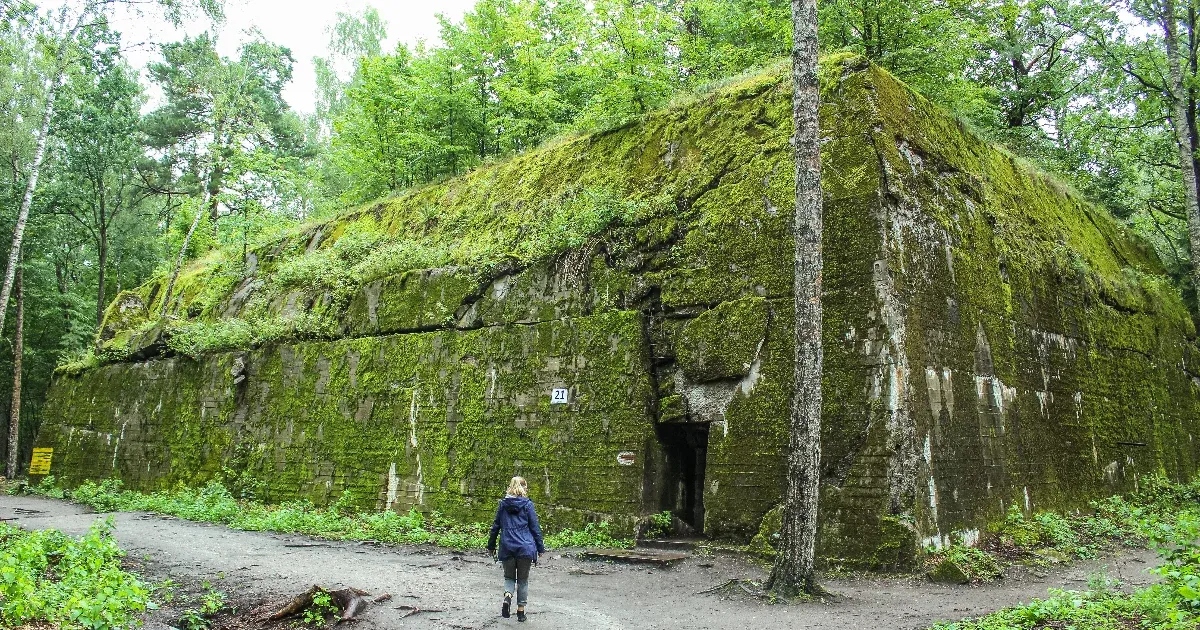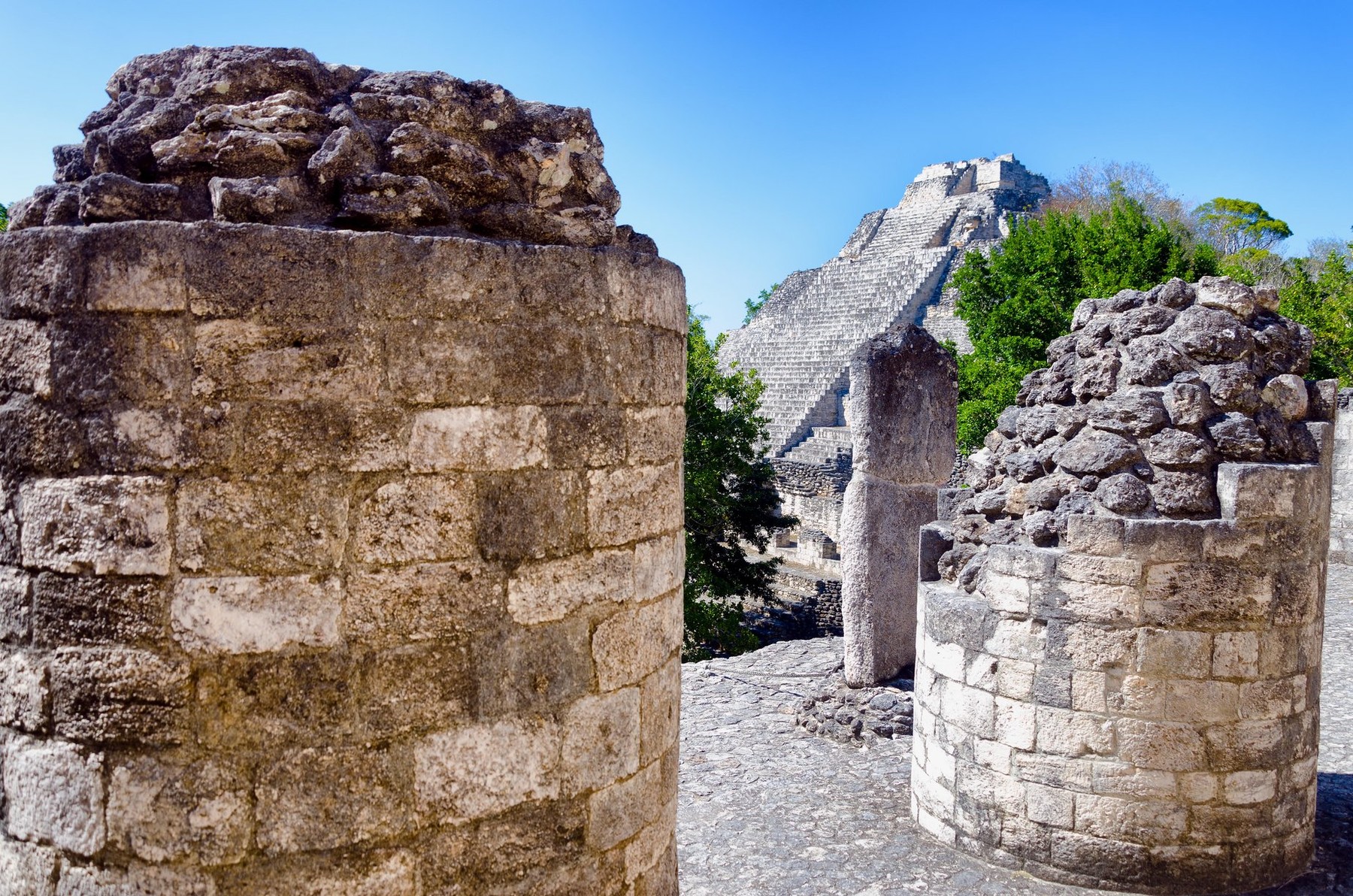This is where a chapter in human history began. The Alpstein massif, part of the northern limestone Alps, is located in the Swiss canton of Appenzell, full of crevasses, caves and craters. Steep mountains and deeply cut valleys make Alpstein a beautiful but sometimes challenging hiking area. That’s what we did, visiting one of the oldest historic mountain hotels in Switzerland and exploring the prehistoric caves of Wildkirchli.
The final stop of the Appenzell Railway is the town of Wasserruen, where an ultra-modern cable car takes passengers up the steep 723-meter climb to Ebenalp in just six minutes, up to 1,644 meters above sea level. A path leads down from the upper station through the prehistoric Wildkirchli Caves. Its name can be literally translated as “a little church in the wilderness”, which was first mentioned in this form by Joachim Vadian, the reformer and mayor of St. Gallen. It can be a bit risky in snowy weather, but not impossible with a good guide.
The three caves are located on the northernmost peak of the Appenzell Alps at an altitude of 1477-1500 meters: Altarhöhle (Altar Cave), Untere Höhle (Lower Cave) and Obere Höhle (Upper Cave).
Source: Gabriela Gecki
“Though the marked hiking path is not visible now, it is useful to orient ourselves as far away as the painted bench, and from there straight towards the furthest pine tree, where the road signs are clearly visible after the left turn. The path becomes clear. We have installed handrails on the The steepest part, so it’s quite safe and there’s also a revolving door in front of the entrance to the caves so wild animals can’t get in. So there’s definitely no bears here today, but of course not because you basically can’t meet teddy bears in the country.The question is also interesting because the researchers They discovered the remains of cave bears in the caves, which were inhabited by hunters or humans during the Paleolithic period, about forty thousand years ago. This is proven by the prehistoric stone tools found in the area,” says cable car operator Ebenalp, while He would give me a pair of snowshoes, which I put on over my hiking boots to get to the caves more safely.
It also reveals that it took millions of years for the power of water to create these cavernous spaces. The karst cave system consists of three cave sections with wide passages. One part of the cave is connected and has two entrances. Neanderthals used them as hunting grounds for about forty thousand years. One of the three caves was converted by the hermits living in the caves into a kind of altar cave, which testifies to their piety, and where they sometimes keep Mass even today. Hermits lived in a second cave during the summer, and today the mountain lodge called Aescher-Wildkirchli (also known as Äscher) is located in the third cave. One of the oldest inns in Switzerland, it dates back to the 19th century, when hermits and shepherds decided to cater to visitors. The rustic alpine guest house, which is virtually built into the rock wall, is now widely known for its unique atmosphere and iconic charm, captured by National Geographic magazine in 2015. Age Destinations: 225 of the Most Beautiful Places in the World In his collection entitled.
The Wildkirchli Caves are the oldest prehistoric cultural sites in Switzerland: the caves are located at an altitude of 1477-1500 metres.
Source: Gabriela Gecki
But back to the Wildkirchl Caves and their history. As can be seen from the paintings on the site, the grotto chapel was established by Friar Philip Tanner in one of the three caves in 1621. However, according to scholars, it can be assumed that the Alpine farmers of Ebenalp built a small place of worship in one of the alcoves long ago, because Tanner He found a neglected place of worship here. Supported by the authorities of Appenzell Innerrhoden, the monk had a wooden altar and a wooden tower with a large cross built in front of the grotto. The church is named after the Archangel Michael and was consecrated to serve as a kind of pilgrimage site. However, after the Tanners left the canton in 1624, the inhabitants simply forgot about the place. It was rediscovered thanks to the Appenzeller Pastor Paulus Ullmann: in 1658 he was the first hermit to settle in Feldkirchli after abandoning his pastorate in Appenzler. At that time, the caves became a popular place of pilgrimage, which was also supported by the Wildkirchl Foundation founded in 1679. For nearly two hundred years, about twenty hermits lived permanently in the caves. They were only given up in perpetuity when Anton Fassler, one of them, fell from it and died in 1853. The former hermitage was later changed hands and after a few years it began functioning as the aforementioned Aescher’s lodge.
The first known documentation of the caves was a visit by the Appenzell Höhlenklub, a group of local speleologists, in 1863. In the next century, in 1904, Emil Bächler, a paleontologist from St. Gallen, made valuable finds such as worked flint tools and bones here, while a cave bear (Ursus spelaeus) was searching for his remains. The age of the precious finds can be placed between fifty thousand and thirty thousand years before our era, which proved for the first time that Neanderthals lived in the Alpstein Mountains at that time. In addition, specialists have also discovered traces of cave bears here, which could have lived here sometime from 90,000 BC.

There is also Wildkirchli with the Church of St. Michael is on the list of cultural assets of national importance for the canton of Appenzell Innerrhoden.
Source: Gabriela Gecki
Excavations finally revealed three layers:
The lower layer (90,000-40,000 BC) contained mainly cave bear bones.
• The middle layer contains flint tools and can be dated to the last phase of the Mousterian period (about 40,000 BC);
• The upper layer preserved the bones of animals such as chamois, ibex and wolves, which suggests that the caves also served as hunting grounds in the summer.
The finds have been displayed at the Wildkirchli Caves and the Appenzell Museum, the latter in a replica of a hermitage in 1972.












































